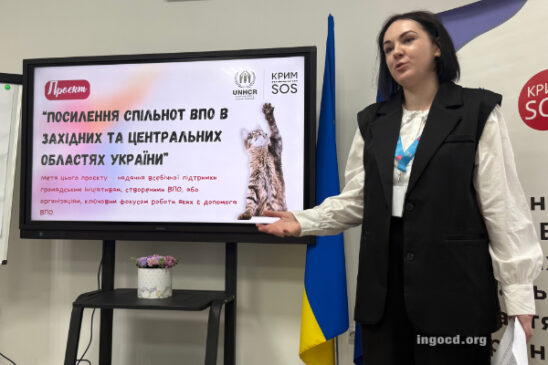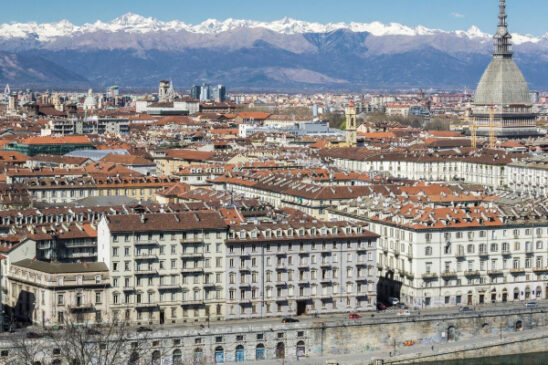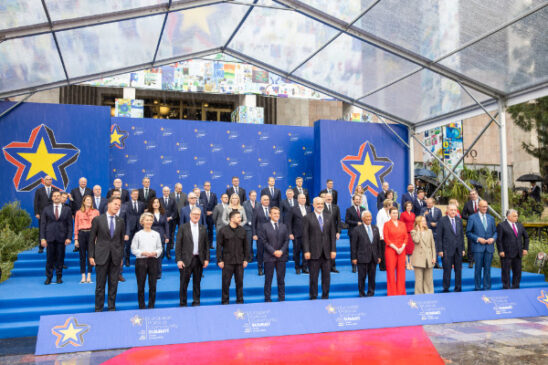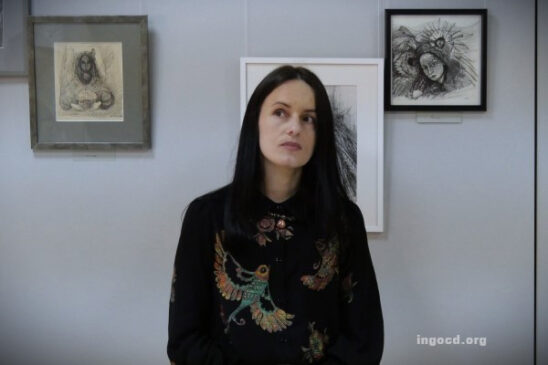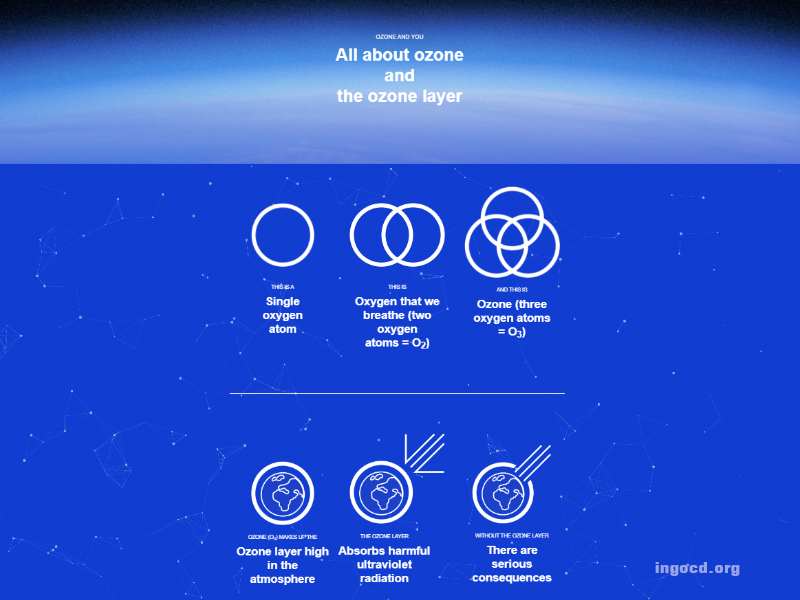
The ozone layer
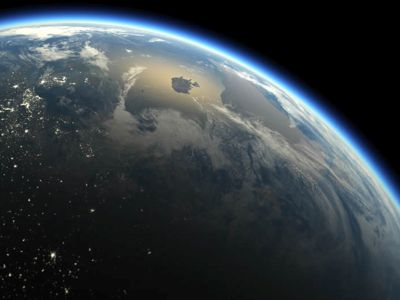 What is the ozone layer?
What is the ozone layer?
The ozone layer is a region of high ozone concentration in the stratosphere, 15 to 35 kilometres above Earth’s surface. The ozone layer acts as an invisible shield and protects us from harmful ultraviolet (UV) radiation from the sun. In particular, the ozone layer protects us from the UV radiation, known as UV-B, which causes sunburn. Long-term exposure to high levels of UV-B threatens human health and damages most animals, plants and microbes, so the ozone layer protects all life on Earth.
 How does ozone protect us from UV-B?
How does ozone protect us from UV-B?
Ozone absorbs UV-B radiation from the sun. When an ozone molecule absorbs UV-B, it comes apart into an oxygen molecule (O2) and a separate oxygen atom (O). Later, the two components can reform the ozone molecule (O3). By absorbing UV-B in the stratosphere, the ozone layer prevents harmful levels of this radiation from reaching Earth’s surface.
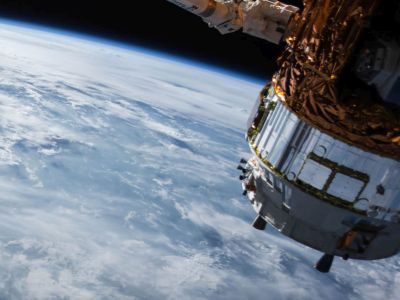 How is ozone produced and destroyed in the stratosphere?
How is ozone produced and destroyed in the stratosphere?
Ozone is being produced and destroyed all the time. As well as UV-B, the sun also emits another form of ultraviolet light, UV-C. When UV-C light reaches the stratosphere, it is completely absorbed by oxygen molecules and never reaches the Earth’s surface. UV-C splits oxygen molecules into oxygen atoms. These single atoms then react with other oxygen molecules to produce ozone. So, these reactions increase the amount of ozone in the stratosphere.
But, ozone is not the only gas in the stratosphere. Other gases containing nitrogen and hydrogen are also in the stratosphere and participate in reaction cycles that destroy ozone converting it back into oxygen. So, these reactions decrease the amount of ozone in the stratosphere.
When undisturbed, the balance between the natural processes of ozone production and destruction maintains a consistent ozone concentration in the stratosphere. Unfortunately, we, humans do not leave this natural process undisturbed…
 The problem
The problem
Ozone depletion and the “ozone hole”
In the mid-1970s, scientists realised that the ozone layer was threatened by the accumulation of gases containing halogens (chlorine and bromine) in the atmosphere. Then, in the mid-1980s, scientists discovered a “hole” in the ozone layer above Antarctica – the region of Earth’s atmosphere with severe depletion.
So, what causes the thinning of the ozone layer around the globe and the “ozone hole” above Antarctica?
Manmade chemicals containing halogens were determined to be the main cause of ozone loss. These chemicals are collectively known as ozone-depleting substances (ODSs). ODSs were used in literally thousands of products in people’s daily lives around the world.
The most important ODSs were chlorofluorocarbons (CFCs), which at one time were widely used in air conditioners, refrigerators, aerosol cans, and in inhalers used by asthma patients. Other chemicals, such as hydrochlorofluorocarbons (HCFCs), halons and methyl bromide also deplete the ozone layer. Most of our computers, electronics and parts of our appliances were cleaned with ozone-depleting solvents. Car dash boards, insulation foams in our houses and office buildings, water boilers and even shoe soles were made using CFCs or HCFCs. Offices, computer facilities, military bases, airplanes and ships extensively used halons for fire protection. A lot of the fruit and vegetables we ate were fumigated by methyl bromide to kill pests.
How do these chemicals deplete ozone?
When a CFC molecule reaches the stratosphere, it eventually absorbs UV radiation, causing it to decompose and release its chlorine atoms. One chlorine atom can destroy up to 100,000 ozone molecules. Too many of these chlorine and bromine reactions disrupt the delicate chemical balance that maintains the ozone layer, causing ozone to be destroyed faster than it is created.
The consequences
Without the Montreal Protocol, large-scale depletion of the ozone layer would have occurred with major consequences
Because of the Montreal Protocol, we have avoided a world where severe ozone holes would have occurred every year over the Arctic and Antarctic. By the mid-21st century, severe ozone depletion would have spread across the planet, including the tropics. But how large an increase in UV-B would have resulted from uncontrolled ozone depletion? And how would increased UV-B have affected people, food production, ecosystems and even construction materials? Let’s explore some of the consequences of failing to control ozone depletion.
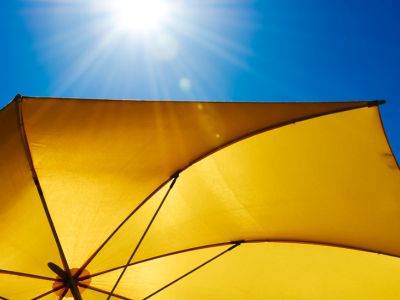 UV-B radiation: now and in a world without the Montreal Protocol
UV-B radiation: now and in a world without the Montreal Protocol
Ozone depletion allows more UV-B radiation to reach Earth’s surface, but UV-B also varies naturally. Levels of UV-B radiation are higher in the tropics than at temperate or polar latitudes, and higher at high altitude than at sea level. UV-B also varies predictably with season (at temperate and high latitudes UV-B reaches its maximum in mid-summer), and with time of day (peak levels occurring around mid-day). Variation in cloud also has large effects.
One way of measuring this natural variation in UV-B is through the UV-index (UVI)[WHO1]. UVI is a measure of sunburning UV radiation, and is now commonly used to show UV levels in weather forecasts. The World Health Organisation (WHO) defines any UVI greater than 11 as extreme[WHO2] but with the protection of an intact ozone layer, such high UVIs only occur at high altitude in the tropics[WHO3].
Computer models are giving us insights in to UVI in a world without the Montreal Protocol (often called the ‘World Avoided’). By the middle of this century, UVI values over 25 would have occurred at most latitudes, and UVI would have reached around 50 in the tropics, so five times the current definition of ‘extreme’ UV radiation.
Damage to human health and well-being
Even with the Montreal Protocol to protect the ozone layer, we should all try to avoid too much exposure to the sun to reduce the risk of disease such as skin cancer and cataracts that are cause by overexposure to UV-B radiation. But what if the Montreal Protocol had not been successful? How would the major diseases have been affected by unchecked ozone depletion on this world-avoided?
 Skin cancers in a world without the Montreal Protocol
Skin cancers in a world without the Montreal Protocol
There are strong links between over-exposure to UV radiation and the development of the three most common forms of skin cancer (malignant melanoma, basal cell carcinoma and squamous cell carcinoma). Even now, with the successful implementation of the Montreal Protocol, skin cancers are amongst the most common forms of cancer, especially in pale-skinned populations[WHO5].
Understanding how the prevalence of skin cancers would have increased with uncontrolled ozone depletion comes from computer models of the world avoided. These models combine our understanding of how ozone-depleting substances affect the ozone layer, of how changes in ozone affect UV radiation and of how UV radiation affects the incidence of skin cancers.
For example, one global model suggests that by 2030 the successful implementation of the Montreal Protocol will be preventing about two million skin cancers every year. A longer-term model focussed on health effects in people born in the USA between 1890 and 2100. This model estimates that protecting the ozone layer will have prevented a total of approximately 443 million cases of skin cancers and 2.3 million skin cancer deaths in the USA alone. This includes 8-10 million cases of malignant melanoma. As yet there are no long-term world-avoided models for skin cancers globally. However, all the existing models lead to the same conclusion. Uncontrolled ozone depletion would have substantially increased the risk of skin cancers worldwide.
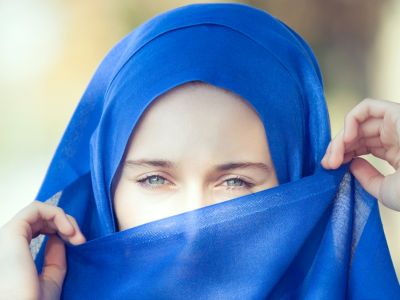 Eye disease in a world without the Montreal Protocol
Eye disease in a world without the Montreal Protocol
Exposure to high levels of UV radiation leads to an increased risk of cataracts. The World Health Organisation already considers cataracts as a priority eye disease[WHO6]. Cataracts are responsible for around half of blindness world-wide, equivalent to about 20 million people in 2010[WHO6]. At the moment a world-avoided model for cataracts is only available for the USA. This model indicates that failure to control ozone depletion effectively would have led to almost 63 million additional cataract cases in people born in the USA between 1890 and 2100.
 Other health effects in a world without the Montreal Protocol
Other health effects in a world without the Montreal Protocol
As well as skin cancers and cataracts UV radiation can have other health effects. These effects include the production of vitamin D in the skin that is beneficial to health. In the world we live in now, with effective protection of the ozone layer, there is a balance between the positive and negative effects of UV-B[WHO4]. Had we failed to protect the ozone layer that balance would have swung dramatically towards the negatives, above all the increased risks of skin cancer and cataracts. By avoiding these negative consequences, the Montreal Protocol has made a major contribution to good health and well-being, one of the sustainable development goals adopted by all United Nations Member States in 2015.
 Damage to food security
Damage to food security
Over the course of evolution, animals, plants and microbes have developed mechanisms that allow them to cope with the variation in UV-B radiation that they experience in their normal environments, protected by the intact ozone layer. This includes the plants and animals that we all rely on for our food.
Crops need sunlight for photosynthesis, so cannot avoid exposure to UV-B. They have evolved systems that reduce or repair damage, including pigments that act as ‘sun-screens’. As with human health, there is a balance between the positive and negative effects of UVB on plants. Uncontrolled ozone depletion would have shifted this balance very much towards the negative.
Increased exposure to UV radiation can damage aquatic food chains and cause direct damage to crustaceans and fish eggs. As a result, uncontrolled ozone depletion would have threatened fisheries and other aquatic resources that make a significant contribution to global food supply.
As yet there are no ‘world avoided’ models for food production. There are ‘ball-park’ figures of the relationship between ozone depletion and plant growth. These suggest that a 10 per cent reduction in stratospheric ozone might reduce plant production by about 6 per cent. If this relationship holds for the very severe ozone depletions expected in the world avoided then uncontrolled ozone depletion would have substantially reduced crop production globally.
Overall, while we cannot yet quantify the loss in food production, it is clear that without the Montreal Protocol ozone depletion would have made it progressively harder to deliver the sustainable development goal of zero hunger.
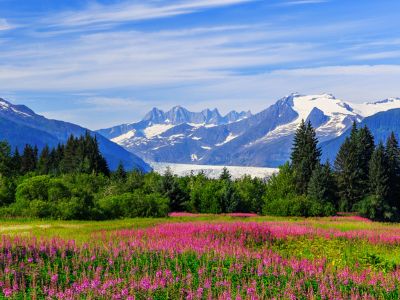 Damage to our environment
Damage to our environment
Just as uncontrolled ozone depletion threatens food production, it also threatens plants, animals and microbes in natural ecosystems. Those ecosystems provide the ‘ecosystem services’ that we all rely on for clean air and clean water, and to absorb carbon dioxide for the atmosphere.
 Life on land
Life on land
As with crops, wild plants are able to cope with current levels of UV-B radiation, but their growth can be reduced by large increases in UV-B. Most animals also seem to be able to avoid the damaging effects of current levels of UV-B radiation. We do not know at what point animals’ protection mechanisms would have been overwhelmed by the unprecedented increases in UV-B in the world avoided. Even so, damage to plants would reduce the food available for herbivores, with consequences for the whole food web.
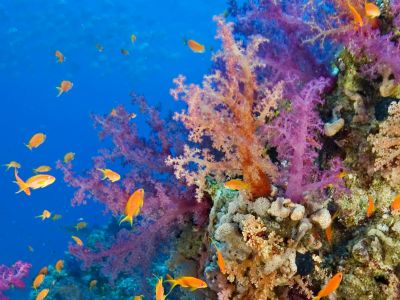 Life below water
Life below water
Oceans are the Earth’s biggest ecosystems. They contain micro-organisms, animals and plants that provide us with half of the oxygen we breathe and much of the food we eat. A healthy ocean is vital to our survival.
In the oceans, lakes and rivers UV-B has adverse effects on many different aspects of the biology of organisms across the food web. While there are no ‘world avoided’ models for ecosystem responses, large increases in UV-B then whole food webs would have been disrupted, threatening biodiversity and ecosystem services.
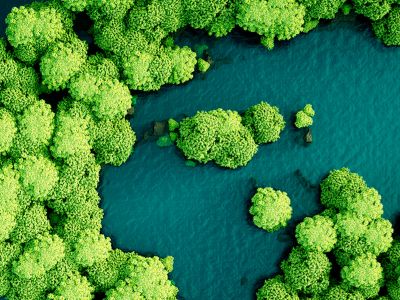 Ecosystems
Ecosystems
Through these effects on ecosystems, large-scale increases in UV-B could alter the exchange of carbon dioxide between the atmosphere and the biosphere. Increased UV radiation also stimulates the breakdown of decaying leaves and other organic matter. Together, the effects of increased UV-B would reduce the ability of ecosystems to trap carbon dioxide, including carbon dioxide produced by human activities. In this way, large-scale ozone depletion would have worsened the build-up of carbon dioxide in the atmosphere that is causing climate change. Changing UV-B also alters the cycling of nitrogen and other chemicals in the environment, which may worsen air pollution.
 Damage to outdoor materials
Damage to outdoor materials
Exposure to UV-B also damages natural and synthetic materials. Vulnerable materials include wood, plastic, rubber and even the materials used in some solar panels. These materials, widely used in buildings, agriculture and commercial products, are already designed to minimize the damage caused by UV.
Large-scale depletion of the ozone layer causing greater exposure to the sun’s UV rays would increase this damage and weaken these materials. This would have led to more rapid deterioration and the need for additional UV protection, increasing the cost and reducing the reliability of many products.
The solution
In the 1980s, the global community decided to do something about ozone depletion. With growing evidence that CFCs were damaging the ozone layer and understanding of the many consequences of uncontrolled depletion, scientists and policy makers urged nations to control their use of CFCs. In response, the Vienna Convention for the Protection of the Ozone Layer was adopted in 1985, followed by the Montreal Protocol on Substances that Deplete the Ozone Layer in 1987. They are the first international environmental treaties to be universally endorsed by 198 nations of the world.

Vienna Convention
The Vienna Convention for the Protection of the Ozone Layer was adopted in 1985 and entered into force in 1988. Nations that signed the Convention – called the parties – agreed to research and monitor the effects of human activities on the ozone layer and to take concrete action against activities that are likely to have adverse effects on the ozone layer.
The Convention did not require countries to take specific actions to control ozone-depleting substances. The specific actions are spelled out by the Montreal Protocol.
Montreal Protocol
The Montreal Protocol on Substances that Deplete the Ozone Layer is a global agreement to protect Earth’s ozone layer by phasing out the consumption and the production of most chemicals that deplete it. The landmark agreement was signed on 16 September 1987 – marked globally as the World Ozone Day – and entered into force in 1989. The Protocol provides a set of practical, actionable tasks to phase out ozone-depleting substances that were universally agreed upon.
The Protocol is unique in having the flexibility to respond to new scientific information. Since its inception the Protocol has successfully met its objectives, and continues to safeguard the ozone layer today.
Kigali Amendment
Although the Montreal Protocol was designed to phase out the production and consumption of ODSs, some replacements of these substances, known as hydrofluorocarbons (HFCs), have proven to be powerful greenhouse gases. In fact, some HFCs are more than a thousand times more potent than carbon dioxide in contributing to climate change.
After several years of effort, the parties agreed on 15 October 2016 to amend the Protocol to include control measures to reduce HFCs (the Kigali Amendment). A successful HFC phasedown is expected to avoid up to 0.5 degree Celsius of global temperature rise by 2100, while continuing to protect the ozone layer.
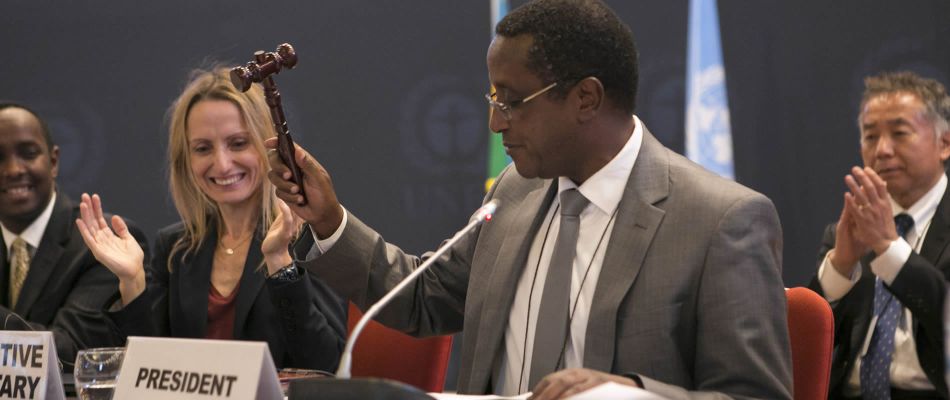
Putting policy into practice
The Vienna Convention, Montreal Protocol and Kigali Amendment create a global policy framework for protecting the ozone layer and the climate. Implementing those policies has required profound changes in many commercial and technological sectors.
Putting policy into practice
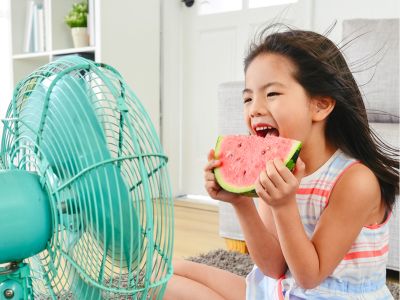 Refrigeration and air conditioning
Refrigeration and air conditioning
Refrigeration and air conditioning were major users of CFCs. Under the Montreal protocol, CFCs have been completely phased-out. Initially CFCs were replaced by HCFCs and then HFCs. The Kigali amendment is now stimulating a further shift towards low global warming HFCs or alternative coolants, such as hydrocarbons or ammonia. This shift to new coolants has also allowed manufacturers and users to switch to refrigeration and air conditioning systems with more efficient energy use.
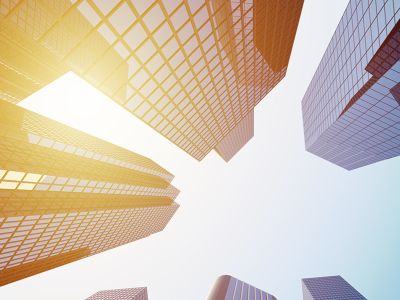 Building materials
Building materials
In the 1990s, almost all the foams used to insulate buildings, refrigerators etc. were ‘blown’ using CFCs. Now CFCs have been completely replaced by ozone-safe technologies including HFCs and hydrocarbons.
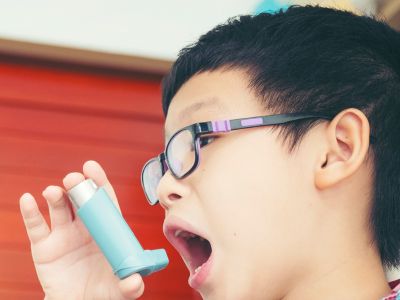 Aerosols and inhalers
Aerosols and inhalers
The rapid and complete phase-out CFCs in aerosols was one of the most recognised achievements of the Montreal Protocol. Replacing CFCs in inhalers used for asthma and chronic obstructive pulmonary disease (COPD) was more challenging. However, affordable CFC-free alternatives for all inhaled treatments have been developed and are now available worldwide.
 Fire safety
Fire safety
The most potent ODSs controlled under the Protocol – halons – are used in fire protection. Halon production has been phased out since 2010. However, one remaining challenge is that halons produced before 2010 are still used for fire protection in civil aviation.
 Crop production
Crop production
Methyl bromide is a potent ODS that was previously used widely to control pest and diseases, both during crop production and in food storage. The Montreal Protocol has stimulated the replacement of methyl bromide with new methods of pest and disease control that are not only ozone-safe, but also safer for operators as well.
Today and tomorrow
While we still have work to do there is good news. As of now, 99 per cent of the ozone-depleting substances that are controlled under the Montreal Protocol have been phased out. Scientists and researchers around the world continually monitor the ozone layer’s progress. They also measure ozone-depleting substances, including some that are not controlled under the Montreal Protocol. These substances have low concentrations in the atmosphere and don’t pose an immediate threat to the ozone layer.
 The ozone layer today
The ozone layer today
The Montreal Protocol is widely lauded as a huge environmental success. Whilst the damage we have done to the ozone layer has not yet been undone, thanks to this agreement and the collaborative effort of nations around the world, there is scientific evidence that the ozone layer is healing itself and is expected to recover by the middle of this century.
The Montreal Protocol has also considerably reduced climate warming because many ozone-depleting substances are also potent greenhouse gases that contribute to climate forcing when they accumulate in the atmosphere. Montreal Protocol controls have led to a substantial reduction in the emissions of ozone-depleting substances over the last two decades. These reduction, while protecting the ozone layer, have the additional benefit of reducing the human contribution to climate change. Without Montreal Protocol controls, the climate forcing due to ozone-depleting substances could now be nearly two and a half times the present value.
 The future is in our hands
The future is in our hands
We’ve made a lot of progress, but we need to continue to work together to protect the ozone layer for the future. While scientists and researchers find new solutions and create earth-friendly products, there are things we can all do, like buying products that are labeled “ozone friendly” or “HCFC free”. Visit the “What You Can Do” section to see a full list of easy things you can do to pitch in. Healing the ozone layer is a major accomplishment, but it also proves something important as we look to the future, how to deal with other global environmental challenges. The message is clear: when people and countries around the world come together, united by a common goal, we can solve seemingly impossible problems. That is surely a cause for great optimism as we contemplate what else our global community is capable of!
WHAT YOU CAN DO?
Even though we are well protected by the ozone layer we should all be aware of our exposure to UV radiation. You can help safeguard yourself and your family by…
Avoiding excessive sun exposure
Wearing Sunglasses
Sunglasses are so much more than a fashion accessory or just for reducing the sun’s glare. The lenses that filter out ultraviolet (UV) rays help protect the eyelid, cornea, lens and retina. Sun damage to the eyes is imperceptible so taking preventative measures is crucial. But while dark lenses stop the glare, sunglasses without an adequate UV rating can cause more damage than not wearing sunglasses at all. When choosing sunglasses, they should have a rating of at least UV 400. This will block up to 99-100 percent of UV rays. So be prepared – if outdoors when the UV index is high, wear sunglasses with total UV protection and a wide brimmed hat to protect your eyes on bright days.
Using Sunscreen
Too much sun causes damage to skin and eyes, but our skin also produces vitamin D when it is exposed to sunlight. When outdoors in the sun, use a sunscreen that provides good UV protection with a sun protection factor (SPF) rating of 30 or higher. Put on sunscreen 15 to 20 minutes before going out in the sun. Remember to reapply regularly if continuously exposed to the sun, especially if you are swimming or sweating a lot – even if the sunscreen states it’s waterproof!
If the UV index is high, try to limit the time spent in direct sun try to avoid sunburn and wear a wide-brimmed hat and protective clothing. And if you are a parent, make sure you protect your child’s skin. Overexposure to sunlight before age 18 is most damaging to the skin so start practicing safe sun habits and awareness from an early age.
Checking UV index
Pay attention to the ultraviolet (UV) index, an international standard measurement of the strength of sunburn-causing UV radiation at a particular place and time, which gives you an idea of how strong the UV light is in your area on any given day, on a scale from 1 to 11+.
A higher number means greater risk of exposure to UV rays and a higher chance of sunburn and skin damage that could ultimately lead to skin cancer. The UV Index is part of many weather forecasts.
Awareness of the UV index and the impact of exposure to UV radiation on our skin is key. Some people get a sunburn faster than others because of their colouring so be aware of what is ‘normal’ for you and how quickly your skin goes red. If you have blonde or red hair, light-coloured skin, and light-coloured eyes, you’ll tend to get a sunburn more quickly than someone with dark eyes and skin. That’s because you have less melanin, a chemical in the skin that protects it from sun damage by reflecting and absorbing UV rays.
Using your shadow to measure UV levels
An easy way to tell how much UV exposure you are getting is to look for your shadow. If your shadow is taller than you are (in the early morning and late afternoon), your UV exposure is likely to be lower. If your shadow is shorter than you are (around midday), you are being exposed to higher levels of UV radiation. Seek shade and protect your skin and eyes. Other factors to consider when assessing UV exposure include the season of the year: UV rays are stronger during spring and summer months, depending in your geographical location. This is less of a factor near the equator. UV exposure goes down as you get further from the equator but will increase at altitude because more UV rays reach the ground at higher elevations. It is also important to be mindful that UV rays can bounce off surfaces like water, sand, or snow. Lastly, UV rays can also reach below the water’s surface, so your skin can still get sun damaged even if under water and feeling cool.
Take care of your appliances to minimize ozone layer impact
The success of the Montreal Protocol means that 99 per cent of the ozone-depleting substances (ODSs) are now controlled. But older refrigerators, freezers or air-conditioning units may still contain ozone-depleting substances that were produced before controls were put in place. By using refrigerators, air conditioners and other equipment responsibly you would assist in protecting the ozone layer and climate too.
Use appliaces responsibly
About refrigerators:
Dispose of appliances and equipment with refrigerants responsibly. When you buy a new appliance such as a refrigerator, look for products that are labeled ‘ozone friendly’ or ‘HCFC free’ or have an energy efficiency label. Dispose your old refrigerator by taking it to a qualified and certified expert, as refrigerators and freezers contain refrigerants that must be removed and recovered before other parts are recycled.
Set the thermostat of your refrigerator and freezer at the right temperature by avoiding too low temperatures. A warmer setting of your air conditioner thermostat will also save energy. Switch equipment off when not in use as even a standby mode consumes energy.
Cooling systems depend on good airflow through their heat exchange panels (evaporators and condensers). Mount your refrigerator so that air can easily circulate at the back and do not put the refrigerator freezer next to an oven or dishwasher.
Clean the refrigerator regularly at the back where the condenser is located and de-ice the freezer regularly.
Put only necessary things in your freezer, remove items that have been there for months. Take frozen food out of the freezer early and let it melt in the refrigerator.
About air conditioners:
Get the right size. If you are buying a new system, make sure to get the size that’s right for your needs.
Mount the air conditioner condenser in the shadow outside. Use blinds if there is too much sun influx that needs to be cooled away and clean your condenser and evaporator regularly.
Keep rooms cool at night with ventilation, without air-conditioning if possible. But if you need extra cooling, consider turning the temperature up – when you’re sleeping, you probably don’t need the air conditioner set as cold as you might think, and also remember that a higher setting of your air conditioner’s thermostat saves a lot of energy.
Incorporate fans. Using fans can reduce your need for extra cooling.
Switch your car air conditioner on after you have been driving for a few minutes with windows open and park your car in the shadow.
About appliances in general:
When buying new equipment, look for ‘ozone friendly’, ‘HCFC free’ or ‘energy efficient’. Remember: if it is energy efficient, it will not only help save the environment but will also reduce your energy bills!
Regularly service older equipment (not CFC free) as their malfunctions cause CFC to escape into the atmosphere. When your equipment needs to be serviced, ask for trained, qualified and certified experts to ensure the equipment is properly repaired and carrier gases are recycled.
Insulate your walls, doors and windows properly for improved energy efficiency and prolonged life of your equipment.
Have your car and home air conditioner and refrigerator checked for leaks. When possible, leaky units should be repaired before being refilled.
Source: ozone.unep.org
V-16-9-24

